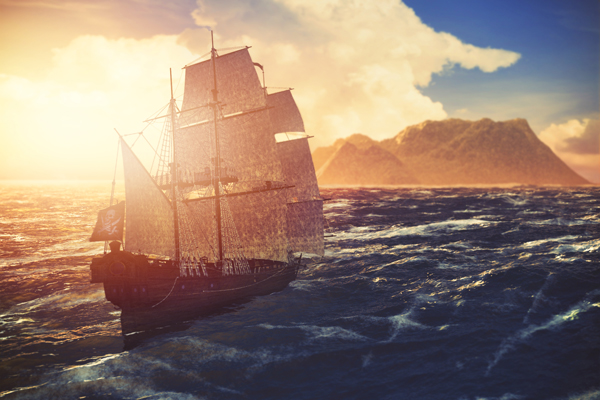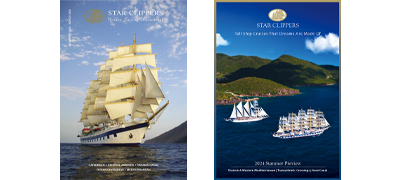The Tallest Clipper Ships to Sail the Seas
22nd March 2018
Today, the maritime industry – be in pleasure or freight – is made up of many vessels boasting the latest technology, assisting vessels on their journey from one destination to the next. While these lines continue to develop new ways to power their ships, Star Clippers remains adamant in sticking in the past, offering an historical insight into a bygone era of transportation.

Travel back in time to the 18th century and these clipper ships you see today were in abundance around the world, transporting valuable cargo including tea, gold and spices. No two clipper ships were ever built exactly the same, with structure styles changing and developing throughout time. While the Star Clipper, Star Flyer and Royal Clipper are all clipper ships, they are better known by other names. The Star Clipper and Star Flyer are actually four-masted barquentines, while the Royal Clipper is five-masted full rigger.
What other types of clipper ships are there?
Brig
Consisting of two masts – both carrying square sails – this smaller-sized ship would be generally used to carry freighting cargoes over large bodies of water. The main benefits of a brig were that it could be easily manoeuvred in restricted spaces, which enabled them to dock in smaller harbours without the need for tugs.
Brigantine
Much like a brig, but with square sails on the foremast and gaff sails on the second mast. It required a much smaller crew than a brig due to gaff sail (triangular in shape) on the second mast being easier to handle than square sails. Square sails also made brigantines much more adapted than traditional schooners for sailing in following winds.
Schooner
Schooners commonly consisted of two masts, but would sometimes be built with three or even more – as many as seven, in exceptional cases. Much like a brigantine, they were easier to handle and only needed a smaller crew. Their sails made them much easier to navigate through waters with varying wind directions.
Clipper Ship
The clipper ship became famous during the California gold rush – and speed was certainly at the forefront of the design. Their three masts – all equipped with square sails – made them ideal for fast ocean passages. This, in addition to a protruding stern and a length that was at least five times the width, made clippers a perfect option for trading and transporting valuable cargo.
Barquentine
Barquentine vessels comprised of three or four masts, with square sails fitted to the foremasts and gaff sails fitted to the others. They were often used to sail through waters with varying winds and were much similar to a barque, only barquentines featured a much smaller rig.
Full-Rigged Ship
A full-rigged ship would comprise of at least three masts, with five masts in exceptional cases. These ships were fully-rigged, but did undergo a number of transformations as time progressed to reduce the number of crew members required on board. Rather than being made of wood; hulls, masts and yards were made of steel to make sailing much more simplified. It was also easier to adjust the sails on full-rigged ships and they were perfectly suited to sailing in following winds, thus making them ideal for intercontinental voyages.
Four-Masted Barque
As the name suggests, these ships always comprised of four sails, with the fourth mast (also known as a jigger-mast) carrying a gaff sail and the others being equipped with square sails. These were the most commonly-used vessels in trans-oceanic trade, carrying vast amounts of cargo. Later innovations in hull, rigging and equipment – including steam-powered winches – made it possible to reduce the crew on board.
Five-Masted Full Rigger
These were the most impressive of all the clipper ships and were very impressive. In 1902, Preussen graced the seas as the largest sailing ship ever to be built and served the purpose of serving the nitrate trade from Chile to Germany. They were built with five masts and square sails on each of them – providing a total sail area of 6,800 square metres. The Royal Clipper was inspired by Preussen and, upon completion in 2000, became the largest clipper ship ever built.
Star Clippers have done their utmost to maintain tradition and offer a glimpse into a bygone era or sailing aboard their traditional vessels. Rather than being built for trade, however, these ships have been specifically constructed with pleasure in mind and, today, you can dock in a range of fabulous destinations throughout the Mediterranean, Caribbean and South-East Asia.
For more information about the full range of sailings available, contact our friendly team via the freephone number above or chat to an advisor online today.


